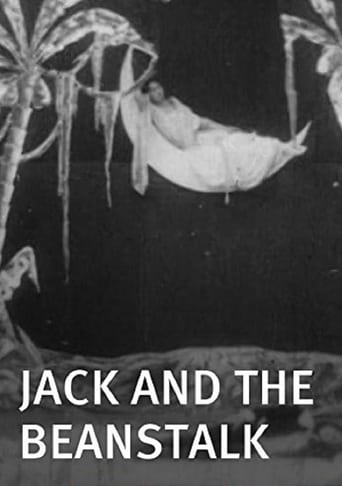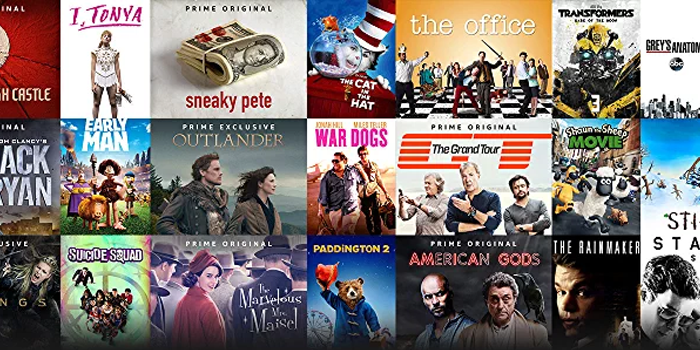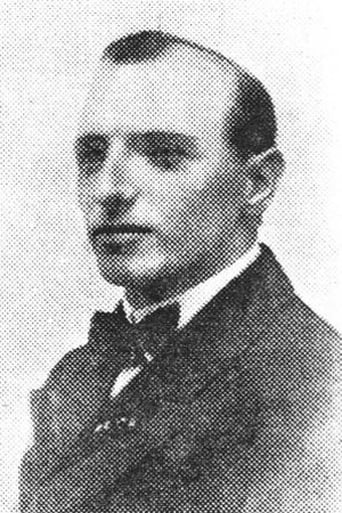

Jack and the Beanstalk (1902)
Porter's sequential continuity editing links several shots to form a narrative of the famous fairy tale story of Jack and his magic beanstalk. Borrowing on cinematographic methods reminiscent of 'Georges Melies' , Porter uses animation, double exposure, and trick photography to illustrate the fairy's apparitions, Jack's dream, and the fast growing beanstalk.
Watch Trailer
Cast


Reviews
The Worst Film Ever
Simply Perfect
Very good movie overall, highly recommended. Most of the negative reviews don't have any merit and are all pollitically based. Give this movie a chance at least, and it might give you a different perspective.
One of the worst ways to make a cult movie is to set out to make a cult movie.
Jack and the Beanstalk (1902) *** (out of 4) Nice version of the famous story from Edison with direction by Edwin S. Porter who was close to making his landmark film THE GREAT TRAIN ROBBERY. The story is about as well-known as you can get but young Jack (Thomas White) trades his cow for some magic beans, which end up growing high into the sky. He ends up climbing up where he encounters the bad guy who he must destroy. If you're looking for anything ground-breaking then you're not going to find it here. I'm sure many people will look at this 1902 film and see it as hokey but it's doubtful these people would be overly interested in the history of film. Those who are interested will find this to be a pretty interesting version of the classic story. Porter does a very good job at telling the story, although without any title cards they're certainly expecting you to already know the story. I really loved the visual look of the film including the special effects of the beanstalk growing. The "vine" used for the stalk was even attempted to look realistic, which wasn't always the case in this early films. The cow in the story is a man in the outfit, a common practice for the day and I can't help but feel this adds a bit of surrealism today.
This movie is great. Not only does it show the lengths to which narrative had increased at the time (and Edwin S. Porter's developing skill in creating such narratives), but it's actually a pretty good adaptation of a well known tale if I may say so myself.Early films often used adaptation as a way of telling a familiar story so that people would understand what's going on with aid of memory along with the general narrative structure. Since I have no idea how this film was regarded back then, I can't really say whether it was effective to that audience or not, but I think today, with our familiarity with cinematic devices, we don't need the help. This movie stands alone pretty well on its own.It's also very magical, which I enjoy. I love these early fantasy films like La Voyage dans la Lune and Jack and the Beanstalk. It seems fantasy film-making slowed down as film developed, mostly kept to science fiction, and only recently with CGI has been growing again.--PolarisDiB
I'm writing a book about "folding" in film, a situation which in its simplest form is seen as a movie within a movie.This is the earliest example I know. The movie itself is about 12 minutes long. There are no dialog cards because presumably all viewers would know the story in detail already. Modern audiences will find the presentation pretty hokey. But there are two episodes within this that have an interesting effect. There is a fairy godmother which to my knowledge is not in the original story. She is invented just for the movie. She manipulates events somewhat. Among her interventions are the creation of visions for our hero.The first time is in a dream, and the second in "real life" (or perhaps a dream). Both illustrate what is to come. These are presented in the movie as a movie that the fairy "projects" onto the background. At the end she appears again to merge the two worlds. Ted's law of abstraction holds even in this early example: the distance between our world and the world of the movie is the same as that between the movie and the world of the movie within.Ted's Evaluation -- 4 of 3: Every cineliterate person should experience this.
This representation of the popular children's story on film is pretty pathetic to watch. I know it is one of the earliest efforts at moviemaking, but this 15-minute picture is unimaginative and poorly shot. "The Great Train Robbery" (1903), which I also commented on, is much more creative and exciting to watch.We see little long-haired Jack trade a cow (2 men in a cow-suit) for a hatful of beans from a merchant and later a beanstalk grows from where his mom throws them in the yard (I guess poor Jack attained the wrong kind). Jack dreams of a goose (actually it seems to be a chicken) and golden egg and the next day climbs the stalk into heaven.There is no effort made to be creative in this film. The stalk looks like a rope with leaves on it, the giant is just a tall bearded guy in a home with nothing abnormally large in comparison to Jack and the climax to the film where Jack makes his escape with the goose-chicken and its golden egg is miserable as a stuffed dummy falls from out of screenshot in place of the giant and then the actor takes its place - rising up on his feet in a exaggerated death dance like in most early films. The beanstalk (leaf-covered rope) comes trailing down from above and coils neatly on the giants forehead.Watch something else.


